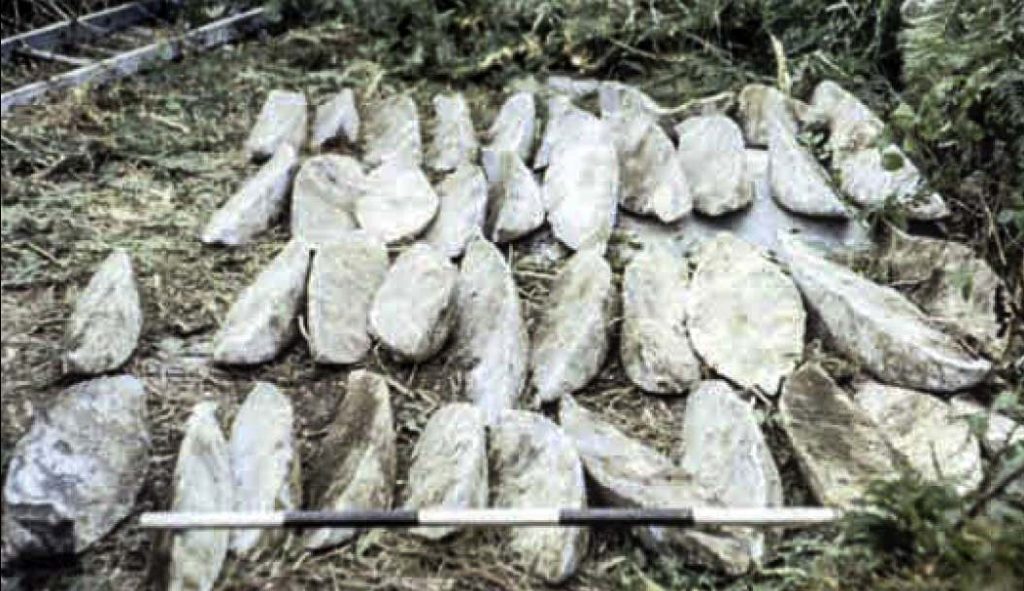Menu: Site Background | 3D Site Plan | Dive Videos | Site Detail
This page provides more detail about the wreck at Bartholomew Ledges. The numbers represent the annotations on the 3D site plan.
1. Trinity House beacon
The site is marked by a navigation beacon consisting of a steel pole fixed to the top of the reef. This replaced a buoy in 2002, after a large cruise liner hit the North Bartholomew Rock in 1997.
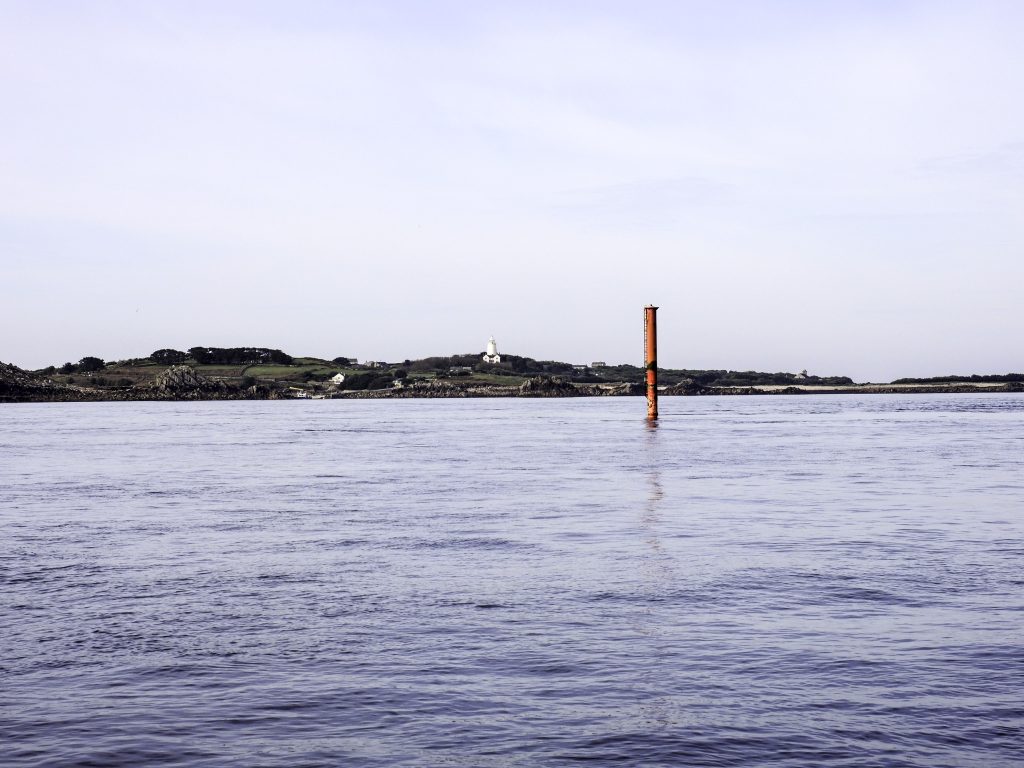
2. Cast iron cannon
This is a cast iron cannon situated in thick kelp about 12 metres south of the steel navigation pole. The cannon is 2.5m (8.2ft) long and is thought to be later in date than the other guns found on the site. It was probably brought to the site by the original dive team to use as a mooring for their dive boat. It may have been taken from the nearby Spanish Ledge reef.
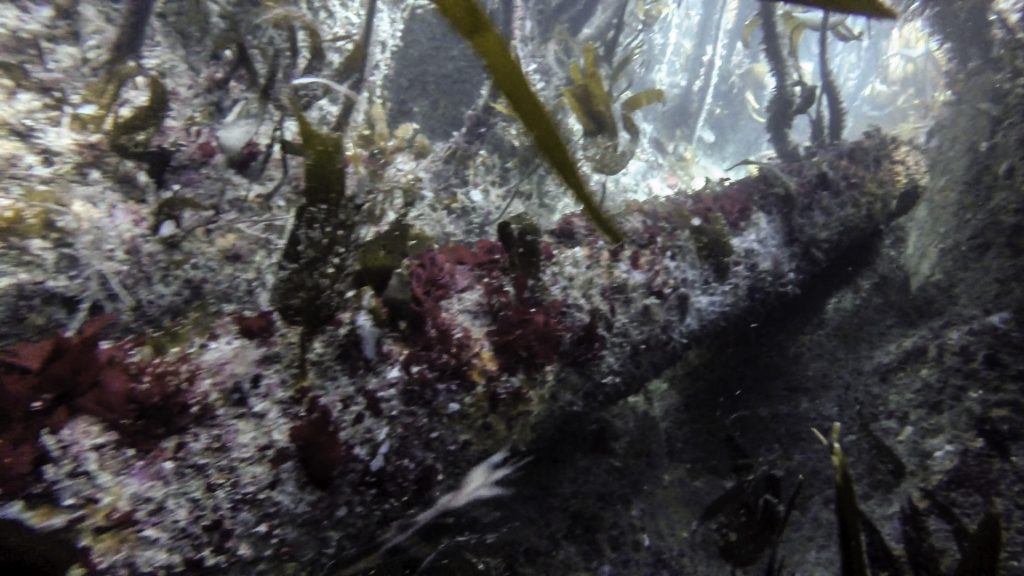
3. Breech-loading wrought iron swivel gun
This is a breech-loading wrought iron swivel gun – part of the muzzle is now broken and missing. It is hard to see any detail, as the gun is now heavily corroded and partly obscured by the thick kelp which covers this site. The site was surveyed in 2003 by Wessex Archaeology, Richard Larn and David McBride. This survey was only possible as they cut down the kelp over the site. The kelp has now regrown and appears to be even taller and thicker than it was previously – perhaps as a result of cutting it down.
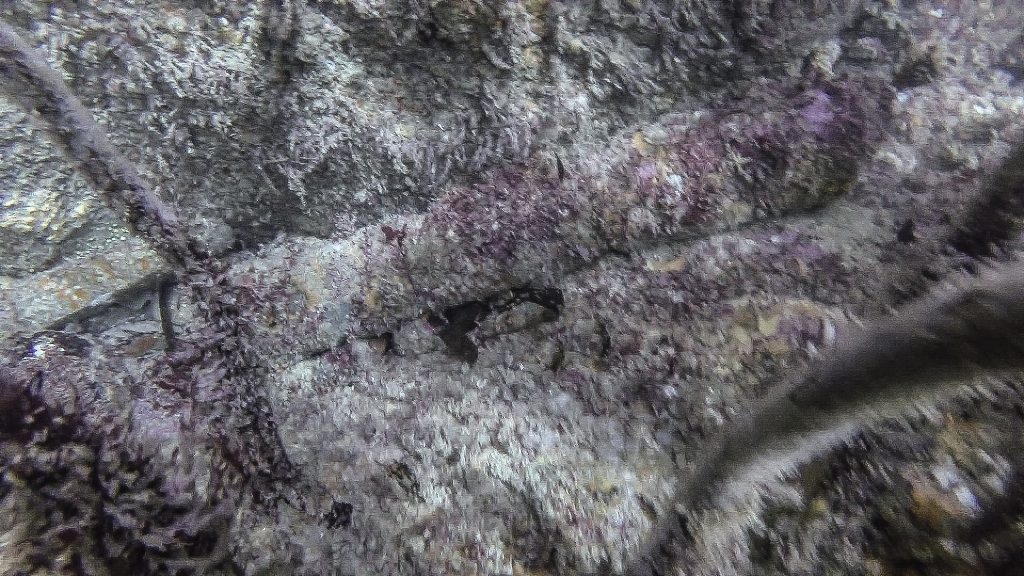
4. Breech-loading wrought iron swivel gun
This is another wrought iron breech-loading swivel gun. These guns were constructed from several pieces of wrought iron forged together to form a gun. They fired small shot, often of less than a pound (0.45kg) in weight. They were usually mounted on a yoke attached to an iron pin, which allowed the gun to be swivelled and elevated at the same time. Aiming was by an iron handle or tiller attached to the rear of the gun. An iron chamber, containing the black powder charge and shot, was inserted into the open breech and held in place with an iron wedge. Each gun would have several pre-loaded chambers, and this would allow a relatively rapid rate of fire. These guns were often fired from the gunnel of a vessel – and this is said to have given rise to the name of the top plank of a boat: ‘gunwale’ (nowadays usually called the gunnel).
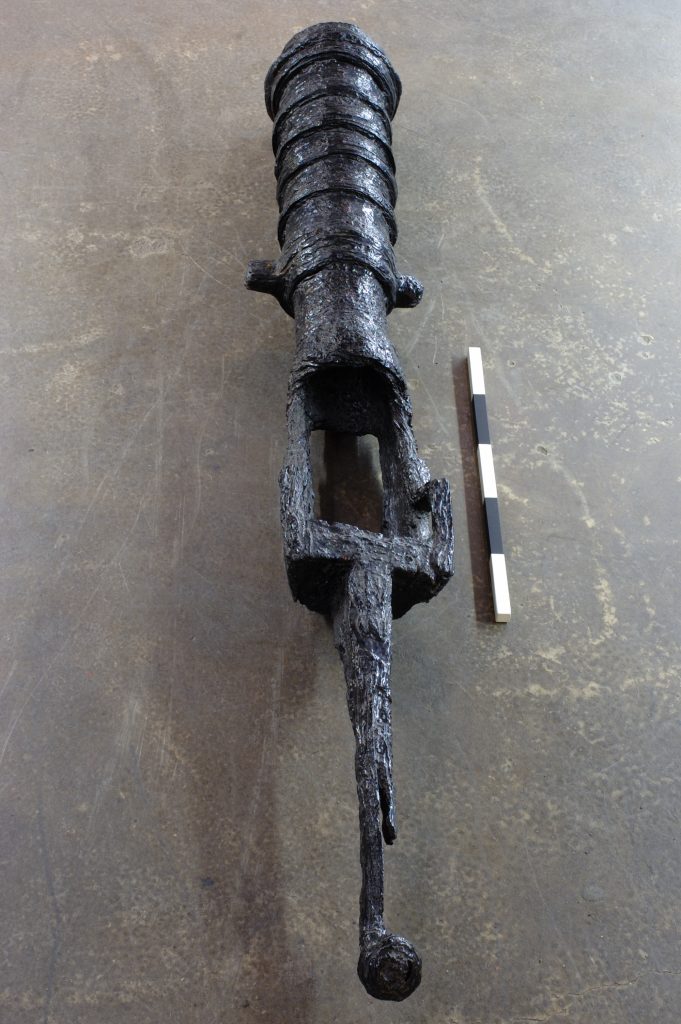
5. Iron anchor and swivel gun
This is part of a wrought iron anchor lying on top of an iron breech-loading swivel gun. The anchor shaft has broken off the two arms of the anchor, each of which retain their flukes. The anchor measures nearly 2m between the tips of the flukes.
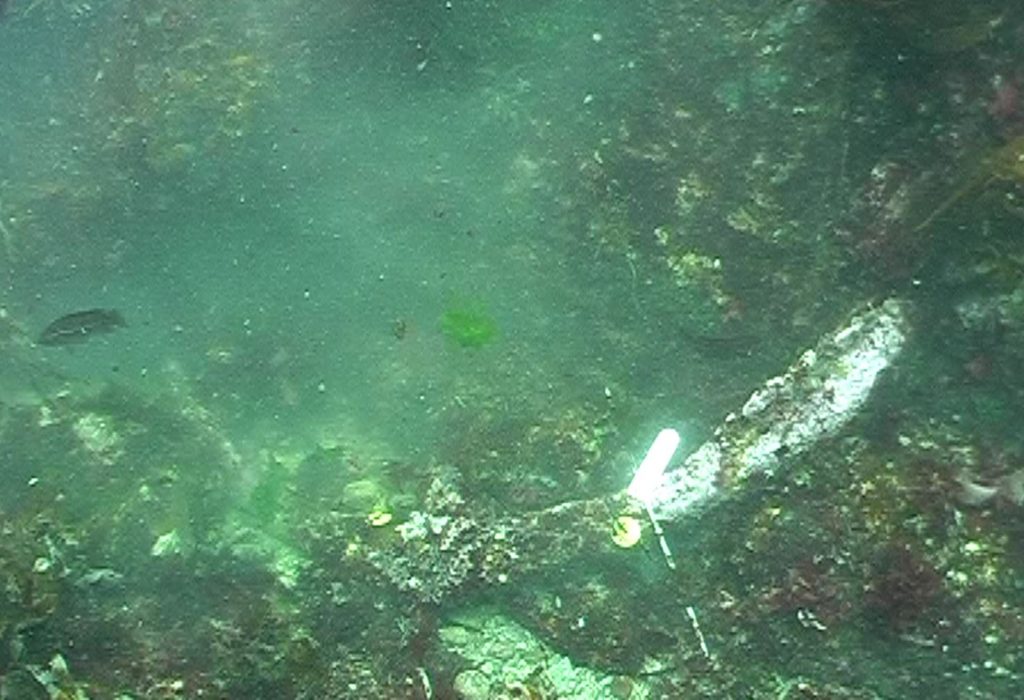
6. Group of anchors
One almost complete anchor lies about six metres to the south-east of a group of three anchors lying together on the seabed.
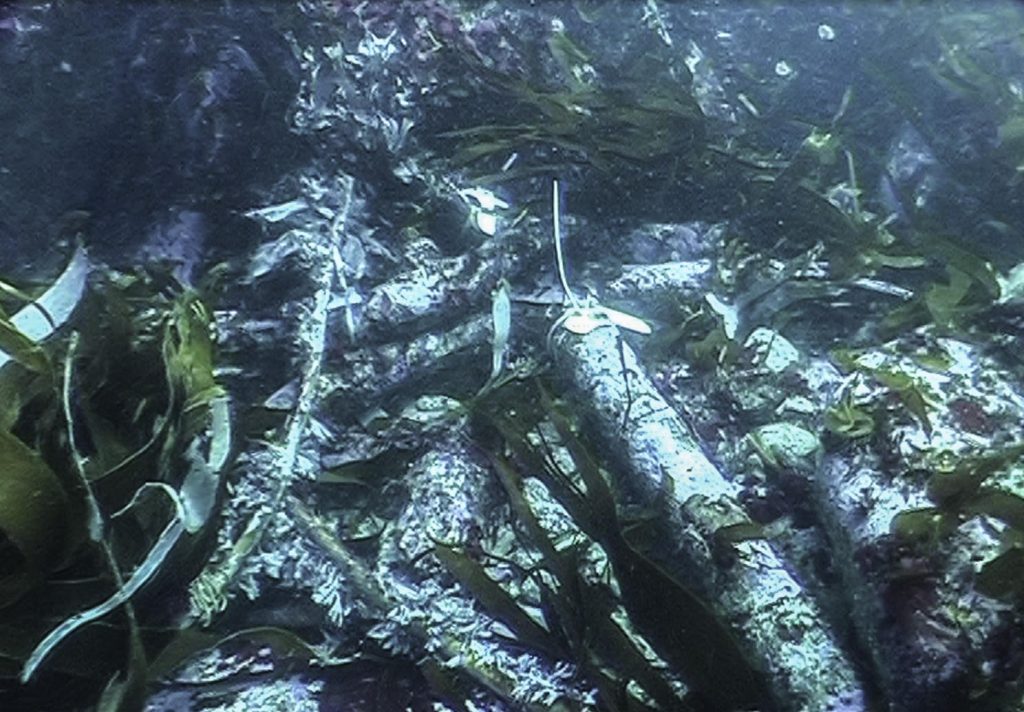
7. Wrought iron breech-loading swivel gun
This is another wrought iron breech-loading swivel gun. What makes this one different is that the iron chamber lies nearby on the seabed – the other breech-loading guns on the site appear to be missing their chambers.
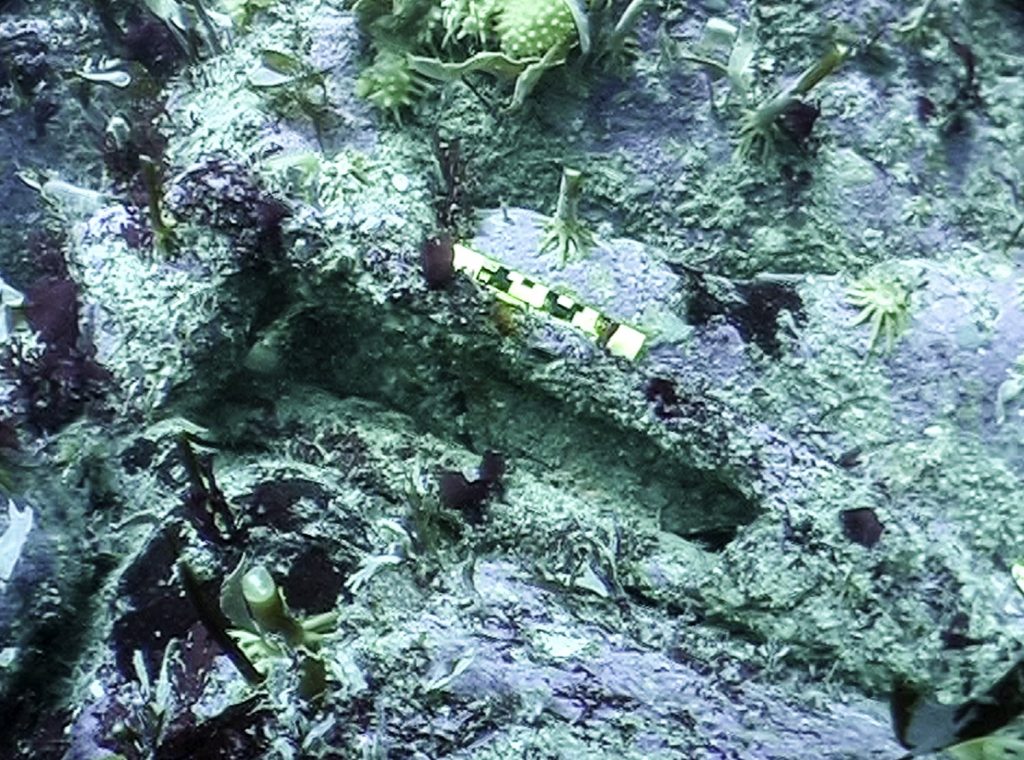
8. Breech-loading tube gun
This appears to be a stock mounted swivel gun, of a type often referred to as a ‘serpentine’. This type of gun consisted of a wrought iron tube fastened to a wooden bed. Nothing remains of the wooden bed.
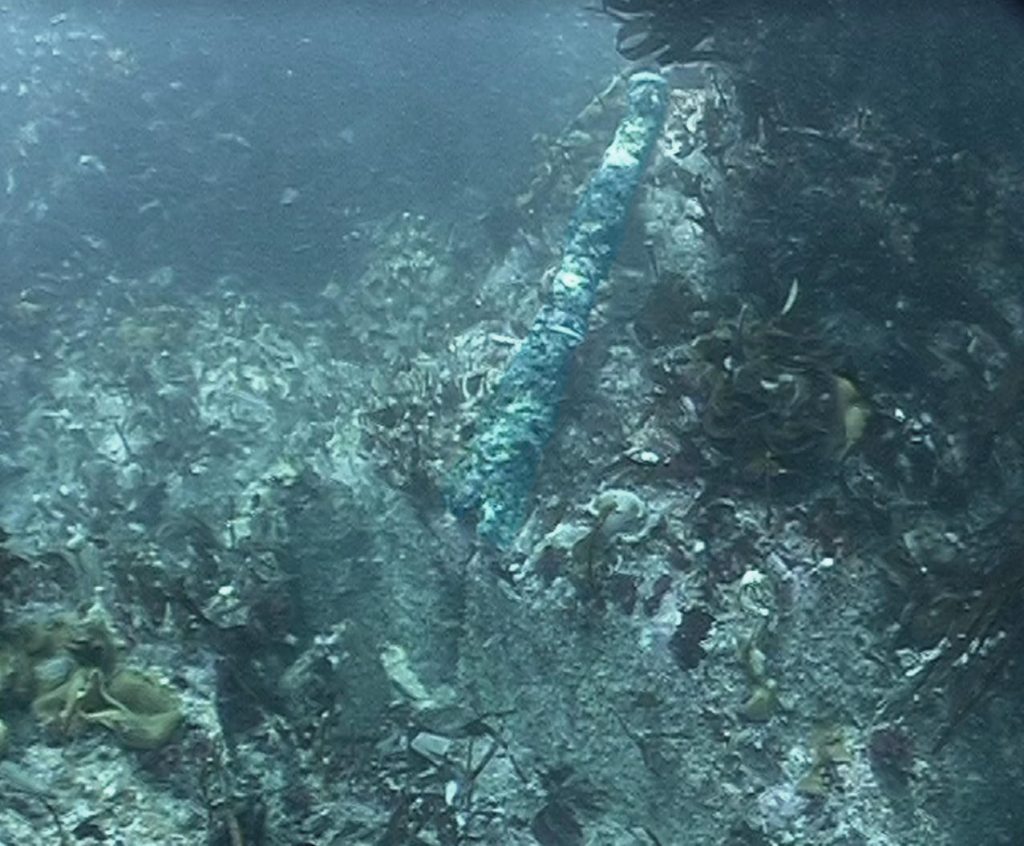
9. Bell fragments and lead ingots
This is thought to be the area where the original dive team found the bell fragments and lead ingots.
In 1979, a large quantity of bronze bell fragments and lead ingots was recovered from the site. This took place before the site was designated in October 1980. The number of bell fragments recovered was at least 644, weighing in total 2699 pounds, which is over 1.2 tonnes. Some adhering clay and a hard black material were interpreted as remains of the casting mould, and it was concluded that ‘…this metal was not the remains of a complete bell…(but) part of a shipment of bell-metal broken deliberately for transport’. It has also been suggested that Lombardic lettering on some fragments indicate that some of the bells were cast before c1420. Most of the bell fragments were apparently sold for scrap at some time after 1981. Ten bronze bell fragments survive in a display at the Isles of Scilly museum, and a further two were seen at the Blue Boar public house in Poole, Dorset. Rumour has it that there are ‘a few’ fragments in private hands on the Isles of Scilly.

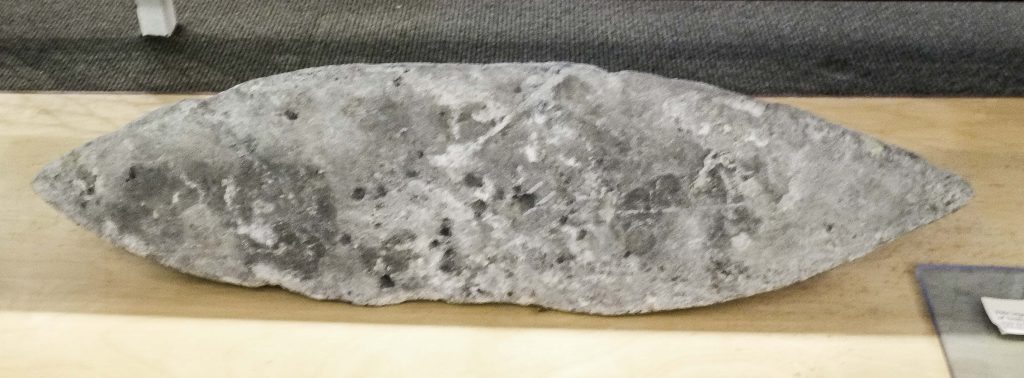
The number of lead ingots recovered is less certain. Diverse reports claim 80, 105 and 130. Only 42 survived to be examined and recorded by Dr Lynn Willies on Bryher in 1982. Many of these ingots are rumoured to have been used as ballast in local boats. Two ingots survive at the Isles of Scilly Museum, and another was sold to the British Museum in 1985 (BM number 1985.0704.7). A fourth ingot was seen at the Blue Boar public house in 2005.
